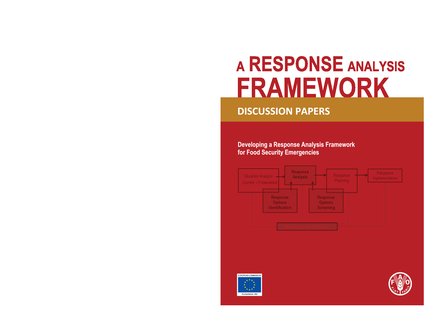
Response analysis is a relatively new procedure, at least in the sense of being a recognized, separate step in the process of taking information about a crisis and using that information to formulate an intervention that addresses the crisis, or the human impact of the crisis. As recently as six or seven years ago, the humanitarian food security sector was clearly relying on a very limited handful of interventions, the selection of which was driven almost entirely by the availability of donor resources or agency capacity and inertia (Levine and Chastre 2004)2 . These interventions could be fairly accurately described as being limited to food aid (general food distribution and/or supplementary feeding) and agricultural support (seeds and tools). The range of interventions has expanded significantly since the mid 2000s, particularly with the rapid rise of cash transfers, but also a much wider range of livelihood support interventions, and more nuanced use of food assistance. Response analysis is emerging as a practice to help agencies determine which of this new array of potential interventions is/are the preferred one(s) in any given circumstance. A number of tools and practices are being developed, however there are still many gaps and grey areas in understanding of the links between situation analysis and response programming. It was in this context that FAO designed a project entitled “Developing a Response Analysis Framework for Food Security Emergencies”. This ECHO funded project had three outputs, the third of which was: “Global understanding of response options analysis improved” The set of discussion papers contained in the current document, together with the two annexes, responds to this output.